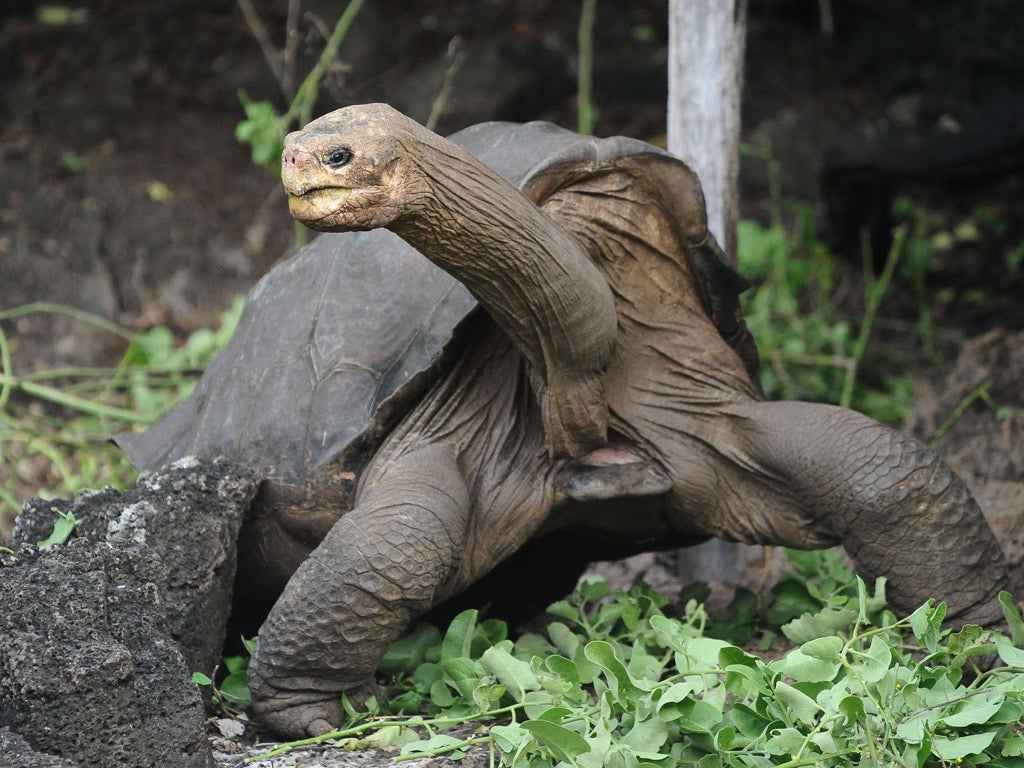Not so Lonesome George: Researchers find 17 other tortoises in the Galapagos Islands similar to famous centenarian reptile

The death of Lonesome George in June this year was mourned by environmentalists worldwide.
The centenarian reptile from the Galapagos was said to be the last Pinta Island tortoise left, and his passing meant the extinction of his subspecies. But now it seems George wasn’t as lonely as scientists imagined.
According to the Galapagos National Park, there are at least 17 tortoises on the Islands with similar genetic traits to George and some may even be from the same genus.
When George was discovered in 1972, tortoises of his kind were believed to be extinct, though it now appears they have a bright future. George’s death “does not represent the end of the Chelonoidis abingdonii species of Pinta Island giant tortoises,” the Park told the AFP.
Researchers from Yale University analysed more than 1,600 DNA samples taken from tortoises living on Isabela Island, the largest landmass in the Pacific Ocean archipelago. They identified “nine females, three males and five youths with genes of the Pinta Island giant tortoise specie,” and claimed there could be “additional hybrids on the Wolf Volcano, and even individuals on Pinta that could be pure”.
There were once around 300,000 giant tortoises spread across the Galapagos Islands, but their numbers dwindled in the 18th and 19th centuries. Whalers and pirates hunted them as food, and introduced new predators to the area. Today, between 30,000 and 40,000 tortoises of ten different species remain. It is believed the Pinta Island tortoise was introduced to Isabela Island by sailors who threw them overboard as surplus stocks no longer required for food.
Subscribe to Independent Premium to bookmark this article
Want to bookmark your favourite articles and stories to read or reference later? Start your Independent Premium subscription today.

Join our commenting forum
Join thought-provoking conversations, follow other Independent readers and see their replies